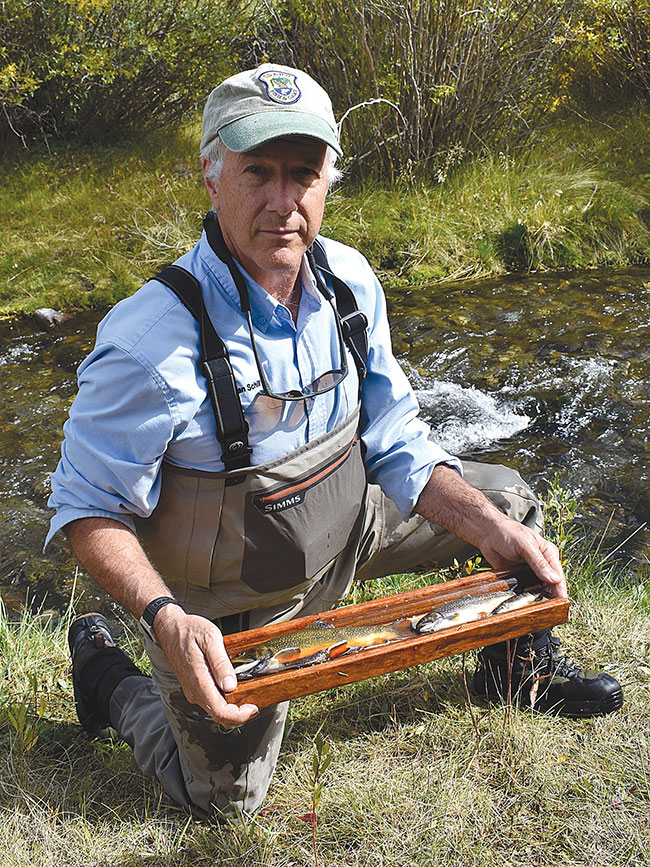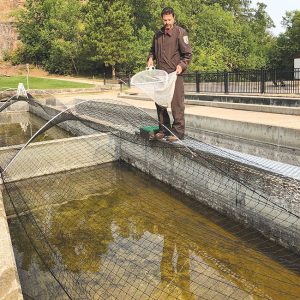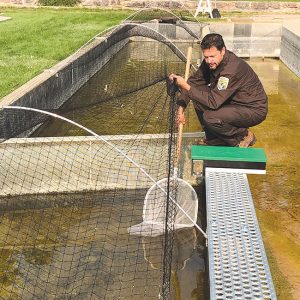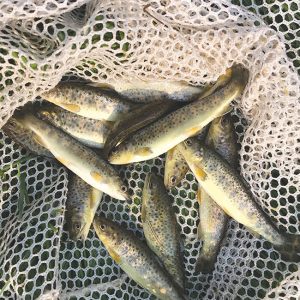
Features
Breeding
Fish Health
Research
Monosex fish might help to address invasive species, researchers say
November 25, 2020 By Matt Jones
 Idaho Department of Fish and Game scientist Dan Schill says that with positive results in developing a YY broodstock of brook trout, experiements have begun to test the technique on other species.
Idaho Department of Fish and Game scientist Dan Schill says that with positive results in developing a YY broodstock of brook trout, experiements have begun to test the technique on other species. Testing is currently underway to determine if monosex fish populations could be used to reduce or eradicate invasive or otherwise unwanted fish populations in the wild.
Researchers and hatchery staff with the Idaho Department of Fish and Game (IDFG) proposed this application for brook trout several years ago and partners at a variety of states are now conducting experiments with different species.
In the technique, young fish are exposed to low doses of a natural female hormone, estradiol, which causes male fish to produce eggs when they mature. Egg producing-males are crossed with standard males, producing around 25 percent male offspring with YY chromosomes. That offspring is then used to produce another generation which would be exclusively male.
IDFG scientist Dan Schill said their efforts with brook trout appear to be successful.
“Now we’re able to say, okay, we kind of know how to do this broodstock and we’re going to move on some other species to see how difficult it will be to build those broodstocks,” he said.
In addition to continuing research into brook trout, partners at state and federal hatcheries are working on brown trout, the common carp, lake trout, northern pike and walleye.
Earlier this year, brown trout at South Dakota’s McNenny State Fish Hatchery were treated with estradiol. Biologist Jill Voorhees says that brown trout aren’t a particular nuisance in their area but they did have them available.
“People in the western U.S. are the ones who usually find them to be problematic because brown trout are not native to the U.S. They’re native to Europe,” said Voorhees. “There’s a lot of streams with brown trout in them who are out-competing some of the native populations of rainbow trout.”
After the treatment was complete, the 1,000 trout were transferred to D.C. Booth Historical National Fish Hatchery & Archives where they will be raised for several years.
“We are looking at the possibility, if there is success with this project, that D.C. Booth would be home to one or more YY broodstocks that in the future would be used for eradication purposes,” said D.C. Booth Hatchery superintendent, Carlos Martinez.
The trout will be housed at D.C. Booth for two to four years, during which time Schill and his team will periodically be testing the efficacy of the process. Martinez said there is some speculation that the brown trout could revert back to being XY males later in their maturation cycle, so that will be monitored closely.
Print this page
Advertisement
- Benchmark Chile embarks on selective breeding
- Single cell protein as substitute for fishmeal in juvenile rainbow trout diet








